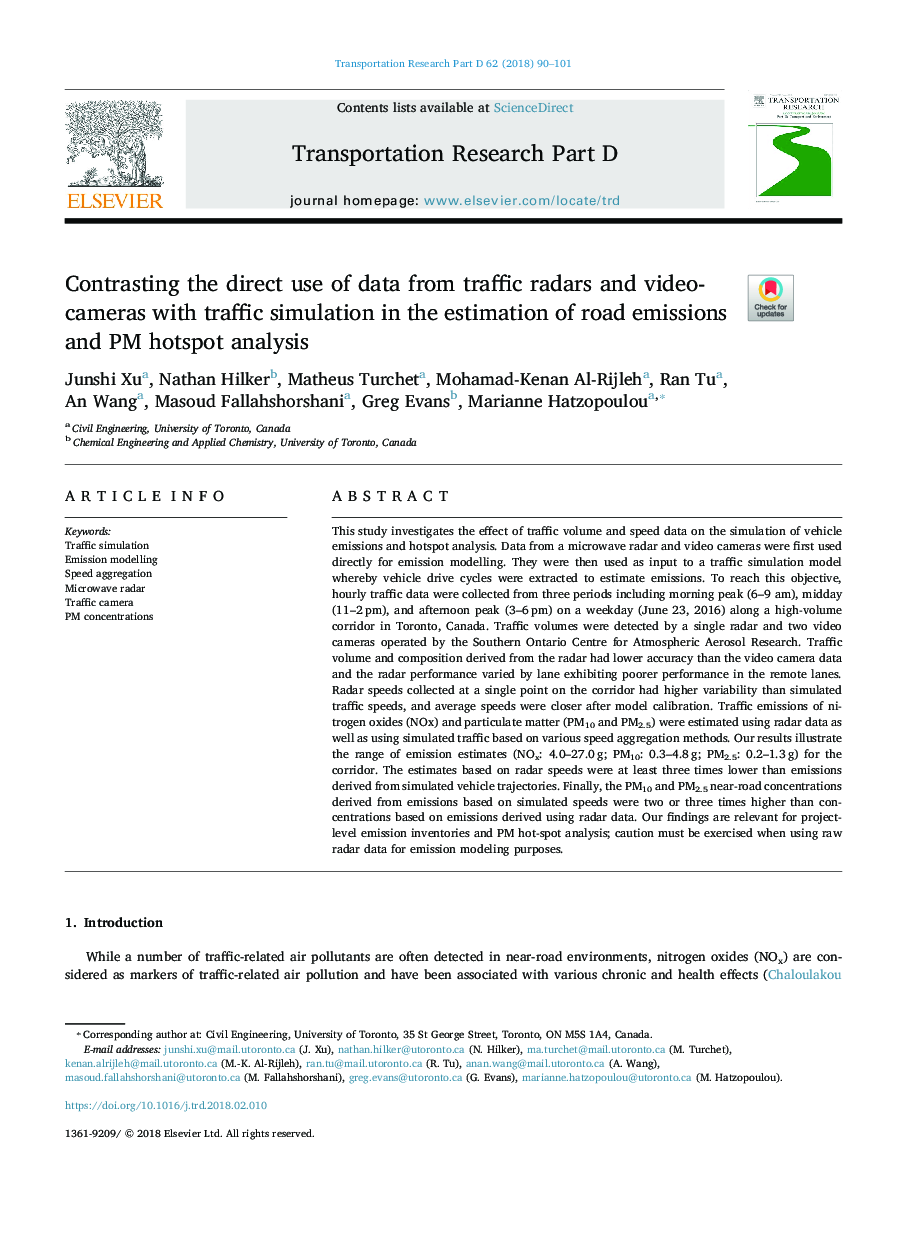| کد مقاله | کد نشریه | سال انتشار | مقاله انگلیسی | نسخه تمام متن |
|---|---|---|---|---|
| 7498680 | 1485861 | 2018 | 12 صفحه PDF | دانلود رایگان |
عنوان انگلیسی مقاله ISI
Contrasting the direct use of data from traffic radars and video-cameras with traffic simulation in the estimation of road emissions and PM hotspot analysis
دانلود مقاله + سفارش ترجمه
دانلود مقاله ISI انگلیسی
رایگان برای ایرانیان
کلمات کلیدی
موضوعات مرتبط
علوم زیستی و بیوفناوری
علوم محیط زیست
علوم زیست محیطی (عمومی)
پیش نمایش صفحه اول مقاله

چکیده انگلیسی
This study investigates the effect of traffic volume and speed data on the simulation of vehicle emissions and hotspot analysis. Data from a microwave radar and video cameras were first used directly for emission modelling. They were then used as input to a traffic simulation model whereby vehicle drive cycles were extracted to estimate emissions. To reach this objective, hourly traffic data were collected from three periods including morning peak (6-9 am), midday (11-2â¯pm), and afternoon peak (3-6â¯pm) on a weekday (June 23, 2016) along a high-volume corridor in Toronto, Canada. Traffic volumes were detected by a single radar and two video cameras operated by the Southern Ontario Centre for Atmospheric Aerosol Research. Traffic volume and composition derived from the radar had lower accuracy than the video camera data and the radar performance varied by lane exhibiting poorer performance in the remote lanes. Radar speeds collected at a single point on the corridor had higher variability than simulated traffic speeds, and average speeds were closer after model calibration. Traffic emissions of nitrogen oxides (NOx) and particulate matter (PM10 and PM2.5) were estimated using radar data as well as using simulated traffic based on various speed aggregation methods. Our results illustrate the range of emission estimates (NOx: 4.0-27.0â¯g; PM10: 0.3-4.8â¯g; PM2.5: 0.2-1.3â¯g) for the corridor. The estimates based on radar speeds were at least three times lower than emissions derived from simulated vehicle trajectories. Finally, the PM10 and PM2.5 near-road concentrations derived from emissions based on simulated speeds were two or three times higher than concentrations based on emissions derived using radar data. Our findings are relevant for project-level emission inventories and PM hot-spot analysis; caution must be exercised when using raw radar data for emission modeling purposes.
ناشر
Database: Elsevier - ScienceDirect (ساینس دایرکت)
Journal: Transportation Research Part D: Transport and Environment - Volume 62, July 2018, Pages 90-101
Journal: Transportation Research Part D: Transport and Environment - Volume 62, July 2018, Pages 90-101
نویسندگان
Junshi Xu, Nathan Hilker, Matheus Turchet, Mohamad-Kenan Al-Rijleh, Ran Tu, An Wang, Masoud Fallahshorshani, Greg Evans, Marianne Hatzopoulou,